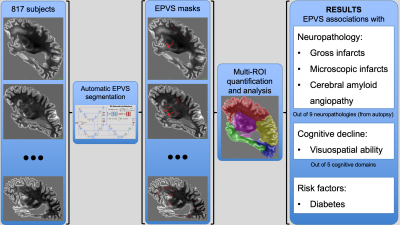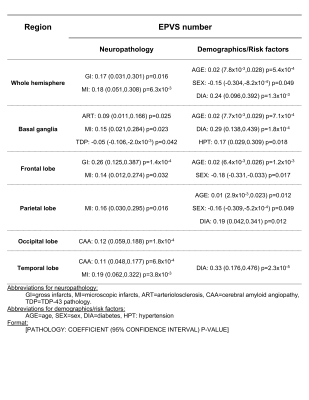Carles Javierre-Petit1, Ashish A. Tamhane2, Arnold M. Evia2, Marinos Kontzialis2, Nazanin Makkinejad1, Gady Agam1, David A. Bennett2, Julie A. Schneider2, and Konstantinos Arfanakis1,2
1Illinois Institute of Technology, Chicago, IL, United States, 2Rush University Medical Center, Chicago, IL, United States
1Illinois Institute of Technology, Chicago, IL, United States, 2Rush University Medical Center, Chicago, IL, United States
In this work, we first developed an algorithm to automatically
segment and quantify EPVS in brain MRI, and then investigated the
neuropathologic correlates of total and regional EPVS, as well as the
contributions of EPVS on cognitive decline in a large community-based cohort of
817 older adults.

Figure 1. Study overview. From left to right, 817 ex-vivo participants
were preprocessed and their corresponding EPVS masks were generated
using a deep learning segmentation model. EPVS were quantified in the
whole brain and multiple ROIs to investigate the associations of EPVS
with neuropathologies, cognition, demographics and risk factors. This
study found EPVS to be associated with gross and microscopic infarcts,
cerebral amyloid angiopathy, cognitive decline in visuospatial ability,
and with diabetes.

